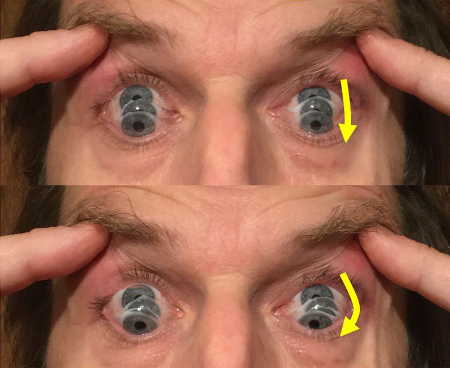Resumo
Definição
History and exam
Key diagnostic factors
- postural instability with unexplained (often backward) falls
- abnormal vertical eye movements
- parkinsonism
- cognitive dysfunction
- rapidly progressive symptoms
Other diagnostic factors
- speech problems
- dysphagia
- behavior problems
- facial and/or limb dystonia
- apraxia
- sleep disturbance
- constipation
- urinary symptoms
- myoclonus
- pyramidal signs
Risk factors
- increasing age (>40 years)
- exposure to chromate and phosphate
Diagnostic investigations
1st investigations to order
- brain MRI
- levodopa trial
Investigations to consider
- polysomnography
- tilt table test/active stand test
- biopsy of bone marrow or skin
- PCR for Tropheryma whippelii
- 24-hour urinary copper
- paraneoplastic antibody panel
- CSF biomarkers for prion disease
- genetic testing
- PET imaging
- CSF biomarkers for Alzheimer disease
Treatment algorithm
all patients
Contributors
Authors
Nahid Olfati, MD
Postdoctoral Researcher
UC San Diego Department of Neurosciences
La Jolla
CA
Declarações
NO declares that she has no competing interests.
Hamidreza Ghodsi, MD
Postdoctoral Researcher
UC San Diego Department of Neurosciences
La Jolla
CA
Declarações
HG declares that he has no competing interests.
Irene Litvan, MD, FAAN, FANA, MPhil
Director of the Parkinson and Other Movement Disorders Center
UC San Diego Department of Neurosciences
La Jolla
CA
Declarações
IR's research is supported by: National Institutes of Health grants: the Michael J Fox Foundation; the Parkinson Foundation; the Lewy Body Association; CurePSP; Roche; Abbvie; Biogen; Centogene; EIP-Pharma; Biohaven Pharmaceuticals; Novartis; United Biopharma; and UCB. She is a member of the scientific advisory board for Amydis, but does not receive funds. She receives her salary from the University of California San Diego and as Chief Editor of Frontiers in Neurology.
Revisores
James H. Bower, MD, MSc
Professor of Neurology
Chair of Division of Movement Disorders
Mayo Clinic
Rochester
MN
Declarações
JHB receives research support from Novartis, Inc.
Peter Nigel Leigh, BSc, MB, BS, PhD, FRCP, FMedSci
Professor of Neurology
Brighton and Sussex Medical School
Honorary Consultant Neurologist
King’s College Hospital NHS Foundation Trust and University Hospitals Sussex NHS Foundation Trust
Chair
PSP Association Research Committee
East Sussex
UK
Declarações
PNL declares that he has no competing interests.
Créditos aos pareceristas
Os tópicos do BMJ Best Practice são constantemente atualizados, seguindo os desenvolvimentos das evidências e das diretrizes. Os pareceristas aqui listados revisaram o conteúdo pelo menos uma vez durante a história do tópico.
Declarações
As afiliações e declarações dos pareceristas referem--se ao momento da revisão.
Referências
Principais artigos
Höglinger GU, Respondek G, Stamelou M, et al. Clinical diagnosis of progressive supranuclear palsy: the Movement Disorder Society criteria. Mov Disord. 2017 Jun;32(6):853-64.Texto completo Resumo
Bluett B, Pantelyat AY, Litvan I, et al. Best practices in the clinical management of progressive supranuclear palsy and corticobasal syndrome: a consensus statement of the CurePSP Centers of Care. Front Neurol. 2021 Jul 1;12:694872.Texto completo Resumo
Litvan I, Agid Y, Calne D, et al. Clinical research criteria for the diagnosis of progressive supranuclear palsy (Steele-Richardson-Olszewski syndrome): report of the NINDS-SPSP international workshop. Neurology. 1996 Jul;47(1):1-9. Resumo
Artigos de referência
Uma lista completa das fontes referenciadas neste tópico está disponível para os usuários com acesso total ao BMJ Best Practice.

Diagnósticos diferenciais
- Idiopathic Parkinson disease (PD)
- Corticobasal degeneration (CBD)
- Multiple system atrophy (MSA)
Mais Diagnósticos diferenciaisDiretrizes
- Best practices in the clinical management of progressive supranuclear palsy and corticobasal syndrome
- Clinical diagnosis of progressive supranuclear palsy
Mais DiretrizesVideos
Tendency to fall on pull test
Slow vertical saccades
Mais vídeosConectar-se ou assinar para acessar todo o BMJ Best Practice
O uso deste conteúdo está sujeito ao nosso aviso legal